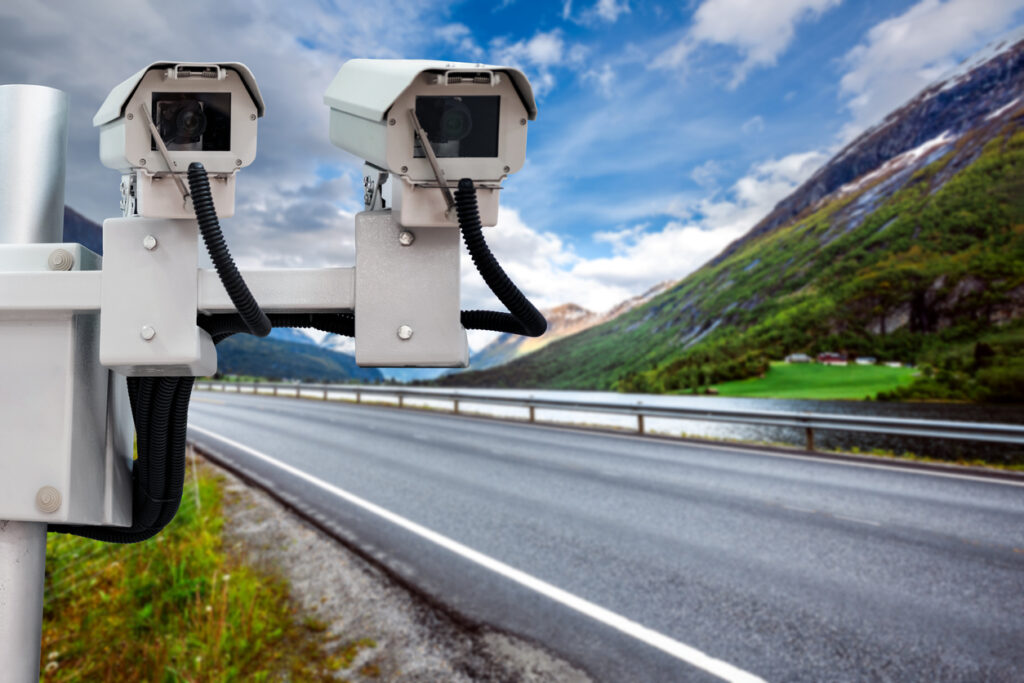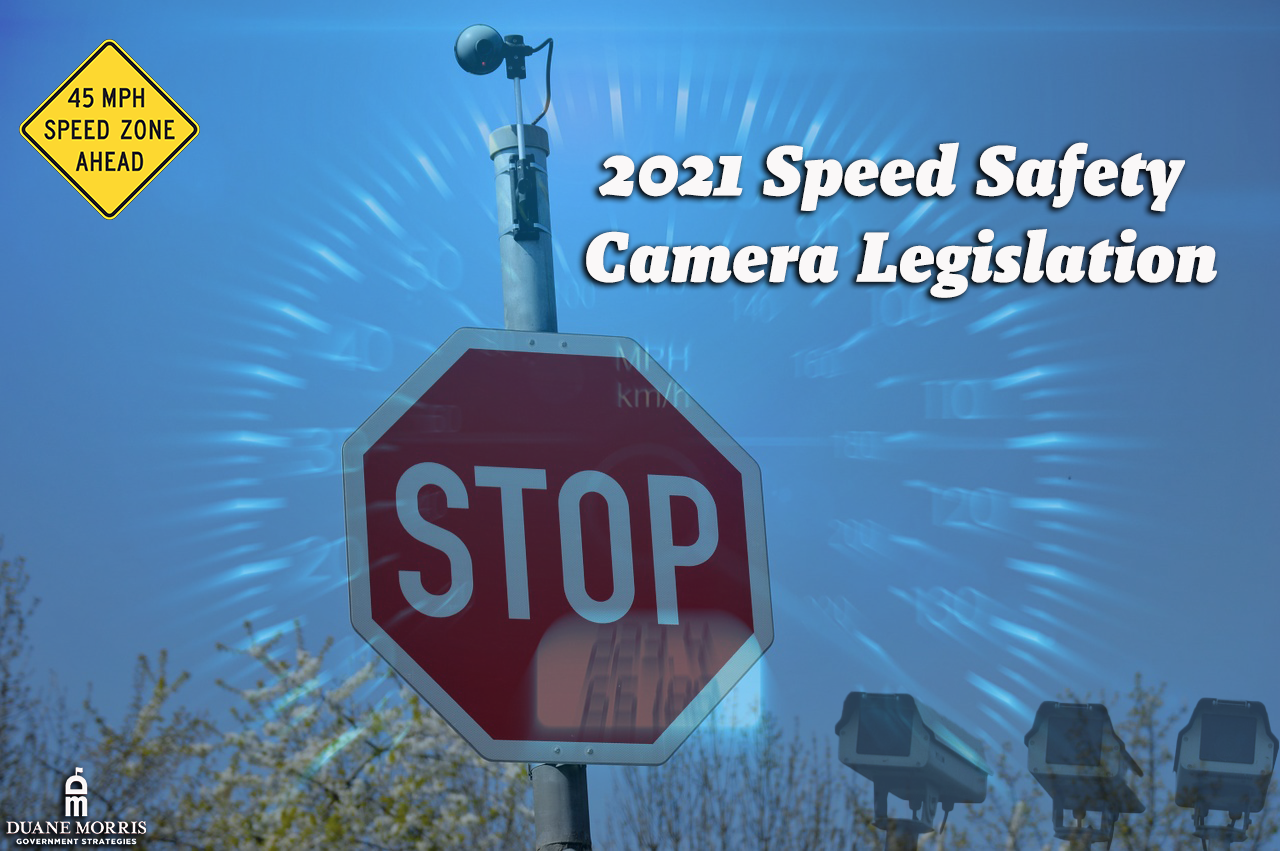
DMGS has extensively covered the issue of automated speed enforcement in previous years, but even more legislative action has taken place surrounding the issue of speed cameras in 2023 sessions around the country.
Automated speed enforcement is a tool for state and local governments and law enforcement agencies to capture images, often using LiDAR or RADAR, of drivers violating traffic laws and thereby issue citations to those drivers. Lawmakers continue to turn to automated speed enforcement to reduce the number of speeders, particularly in school or work zones, as well as vehicle crashes, injuries, and deaths. The National Highway Traffic Safety Administration (NHTSA) reported in June 2022 that 28% of fatal crashes, 13% of injury crashes, and 10% of property-damage crashes were related to speeding in 2020. Additionally, NHTSA reported there were 11,258 fatalities in crashes in 2020, 29% of all traffic fatalities for the year, where at least one driver was speeding. The number of injuries resulting from speeding-related crashes in 2020 was over 308,000, or 13% of the total number of people injured. The number of speeding-related fatalities increased by 17% in one year from 2019 to 2020.
Studies have shown that automated speed enforcement programs achieve their goal of reducing speeding-related crashes. According to a report issued by the Insurance Institute for Highway Safety (IIHS) in 2016, implementing speed cameras in Montgomery County, Maryland for a period of 7.5 years led to a decrease of 62% in the probability of vehicles exceeding the speed limit by more than 10 mph at camera locations. The study also indicated that the presence of speed cameras was linked to a 19% decrease in the likelihood of crashes resulting in severe injuries or fatalities.vAdditionally, Pennsylvania is currently conducting an automated work zone speed enforcement pilot program that PennDOT says has resulted in a speeding reduction of 20% in work zones since the program started. Crashes decreased in 2020 by 19%, with fatalities down 6%.
States Passing Automated Speed Enforcement Bills in 2023
Arkansas Work Zone Speed Enforcement Bill Signed Into Law
In April 2023, Governor Sarah Huckabee Sanders signed SB 481 into law. The new Act will allow for automated speed enforcement in highway work zones, railroad crossings, or school zones. The Act, which goes into effect in August 2023, defines a highway work zone as an area of highway where construction, reconstruction, or maintenance work is being performed.
According to Arkansas DOT, drivers will see “plenty of warning” via signage. Speed cameras will only be used in “active” work zones.
Colorado Expanded Speed Enforcement Bill Signed by Governor
In early May 2023, Colorado lawmakers passed SB23-200, establishing new regulations on using automated vehicle identification systems (AVIS) by state, county, and city jurisdictions. Among other things, the legislation removes the requirement that notices or summons be served and allows for them to be sent via the mail, requires a vehicle’s registered owner to pay the notice unless they request a hearing to dispute the violation, and changes the deadline for when a jurisdiction must issue a notice for a violation captured through AVIS from 90 days to 30 days for in-state registered vehicles and 60 days for out of state registered vehicles. The bill also requires that when implementing a new AVIS system, a jurisdiction needs to publish a report on its website that shows the number of citations and revenue generated by each AVIS corridor.
Florida School Zone Speed Enforcement Bill Passed
In late April 2023, Florida lawmakers overwhelmingly passed HB 657, allowing for automated speed enforcement in school zones. The bill specifically allows for counties and municipalities to use speed detection systems to enforce school zone speed limits for violations greater than 10 miles per hour over the speed limit. Under the bill, counties or municipalities that wish to implement a program must enact a local ordinance. The bill also requires signage warnings that such systems are in use and a public awareness campaign before implementing a speed enforcement program. Additionally, the bill imposes a fine of $100 for violations following an initial 30-day warning period. The registered owner of a vehicle that committed a violation would be responsible and liable for paying the fine unless they submit an affidavit stating who leased, rented, or otherwise had care or control of their vehicle at the time of the alleged violation.
If signed into law by Governor Ron DeSantis, the bill will go into effect on July 1, 2023.
Indiana Work Zone Speed Enforcement Pilot Program Enacted
On May 1, 2023, Governor Eric Holcomb signed House Bill 1015, establishing a work zone speed control pilot program. Effective July 1, 2023, the legislation requires Indiana’s DOT to work with State Police to administer the pilot program and allows INDOT to contract with a third-party vendor to assist with implementing the new program. Additionally, the bill states that no civil penalties will be assessed unless a violation is at least 11 miles per hour over the speed limit. Under the Indiana work zone speed camera bill, a first offense will result in a warning, a second offense will result in a $75 fine, and third and subsequent offenses will result in a $150 fine.
Latest News
In this episode of the Back in Session Podcast, hosts Ryan Stevens and Ryan DeMara are joined by Mark Hutchinson, the CEO and founder of Blue Line Solutions. This episode offers an in-depth look into [...]
Digital collage by Ryan Stevens; image sources by geralt and Clker-Free-Vector-Images from Pixabay According to the National Highway Traffic Safety Administration (NHTSA), speeding killed 9,478 people in 2019. NHTSA also reported that speeding had been [...]
Digital collage by Ryan Stevens; image sources by PublicDomainPictures, Clker-Free-Vector-Images, & A life without animals is not worth living from Pixabay According to the NHTSA, speeding killed 9,378 people in the United States in 2018. Speeding was [...]





Stay In Touch